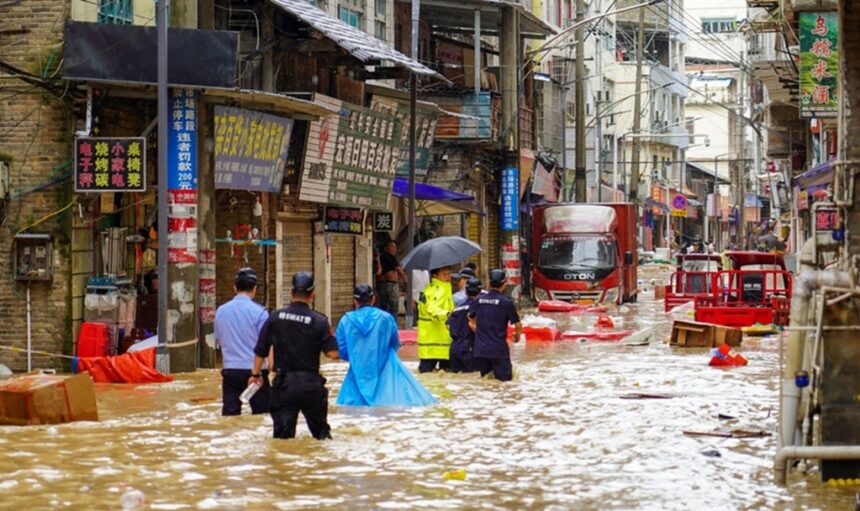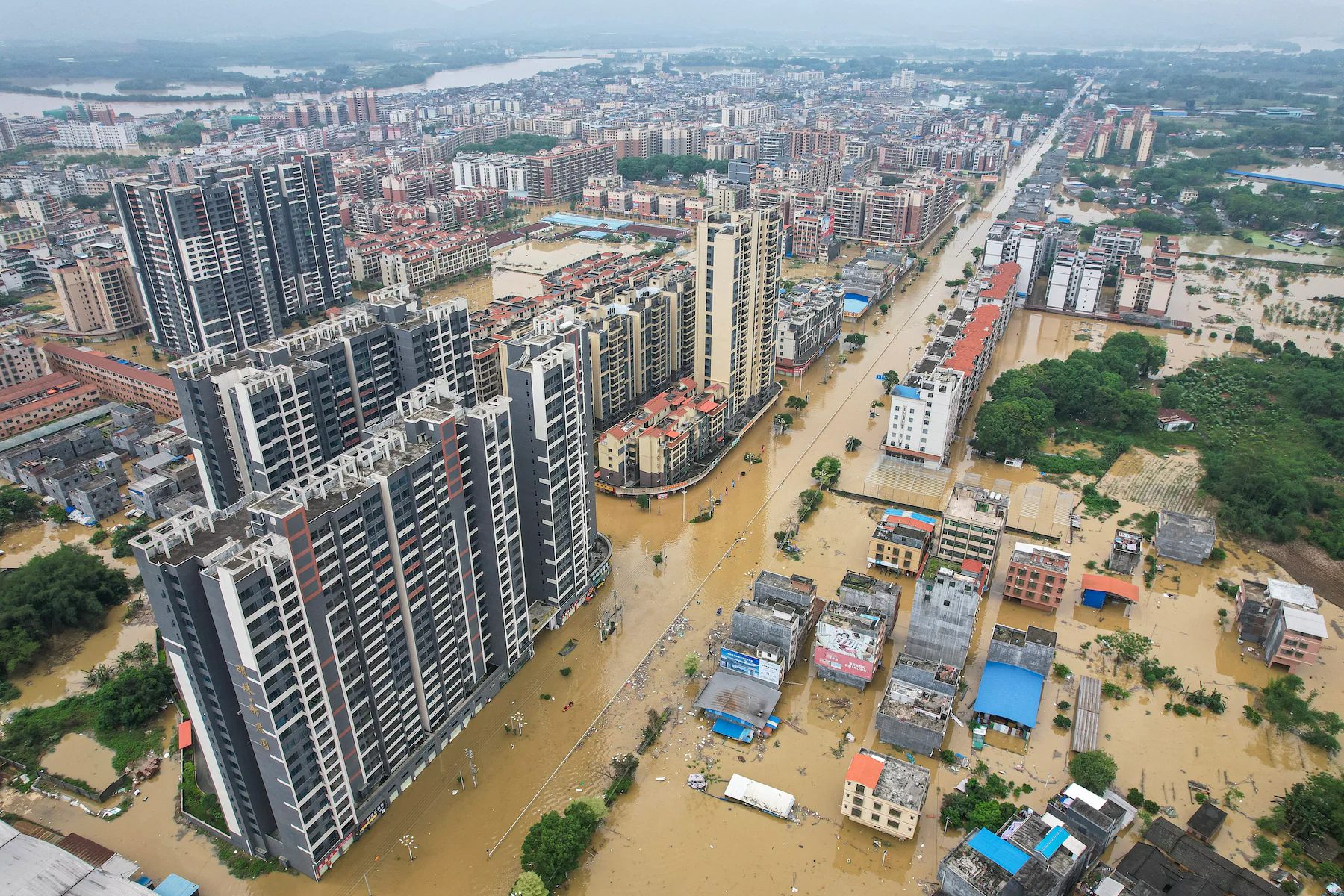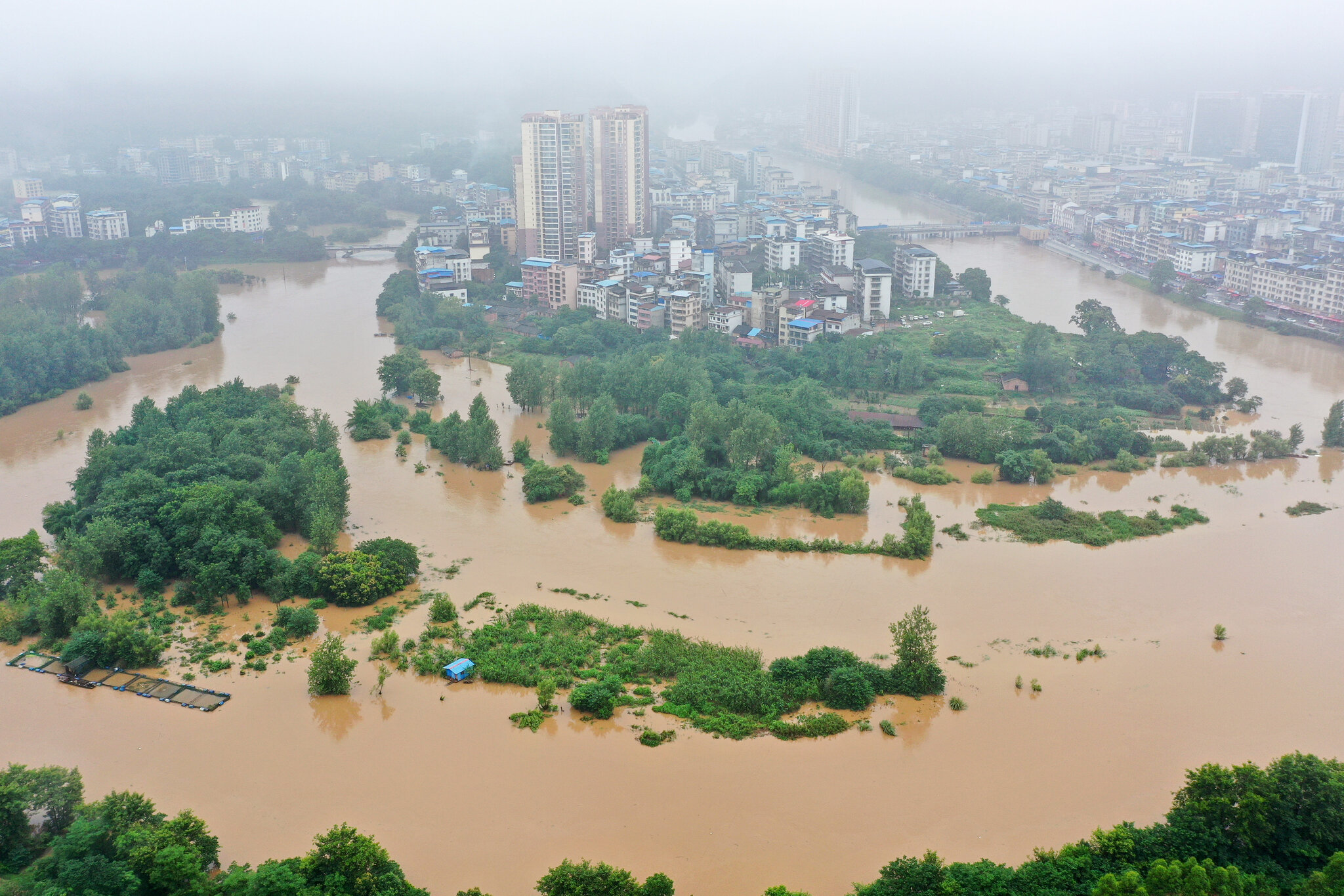GUIZHOU, China – Heavy rainfall from extreme weather has led to severe flooding across southwest China, displacing more than 80,000 people and resulting in at least six deaths in Guizhou province.
The intense weather, linked to a strong East Asian monsoon and the lingering effects of Typhoon Wutip, has left entire neighbourhoods underwater, damaged roads and bridges, and stirred concerns about more storms on the way.
Local officials call this a “once-in-50-years” disaster, which has stretched China’s emergency services as Guizhou and Hunan provinces struggle with the worst impacts.
In Guizhou’s mountainous region, the city of Rongjiang has faced its second major flood in just one week. Sitting where three rivers meet, Rongjiang’s 300,000 residents have watched water levels climb to 256.7 metres, the highest since 1954, according to local authorities.
The floods have brought traffic to a halt, submerged shopping areas, and left a football pitch under three metres of water. This hit comes just as Rongjiang was enjoying a tourism boost thanks to the viral “Village Super League.”
On Saturday, the emergency response was raised to Level I, China’s highest alert, after more downpours almost submerged the city again and forced many to seek safety on higher ground.
“It’s devastating,” said Li Mei, a resident whose bakery was flooded, with her delivery scooter ruined. “We hoped the worst had passed, but the water keeps rising.” Rescue crews have used boats to help people leave flooded areas, and SWAT officers have helped shop owners save their equipment.
A video that went viral showed a truck left hanging from a collapsed bridge in Rongjiang, China, on June 24, with the driver escaping after being stuck above the floodwaters.
The crisis goes beyond Guizhou. In southern China, 13 major rivers across Yunnan, Guizhou, Guangxi, and Hainan have surged past warning levels in the last two days, according to the Ministry of Water Resources.
In Guangxi’s Meilin township, floodwaters reached four metres above safe levels, while a recent tropical depression that hit Hainan on June 26 could cause more problems in Guangdong and Guangxi.
Typhoon Wutip struck southern China earlier this month, leaving at least five dead and nearly 70,000 people displaced. The typhoon’s rains soaked the ground, making later storms more dangerous and raising concerns about landslides and dam failures.
Neighbouring Hunan province has also faced relentless rain since June 18, triggering the area’s worst flooding since 1998. Cities such as Xiangxi and Zhangjiajie have received up to 648 mm of rain, leaving at least three dead and affecting more than 400,000 people.
Officials have issued the highest alert for mountain torrents, as forecasts show up to 180 mm of additional rain expected in the Lishui and Yuanshui river basins by June 28. Flooded roads, ruined farmland, and broken infrastructure have left many towns exposed to further damage.
China’s top economic planner has provided 100 million yuan (about 13.96 million USD) for emergency relief and repairs in Guizhou. Still, experts say rural areas like Rongjiang face bigger hurdles.
“Cities are usually better prepared for floods, but counties like Rongjiang don’t have enough monitoring stations or resources,” said Professor Meng Gao from Hong Kong Baptist University.
Guizhou’s government blames “extreme climate” for the disaster, pointing to climate change as the reason for the heavier and more frequent rainfall.
As floodwaters recede in some places, cleanup begins, but many are still on edge. In Congjiang county, people are clearing mud from homes and shops, while in Guangxi, crews work to restore electricity and phone lines.
The China Meteorological Administration warns that parts of Guizhou, Yunnan, and Sichuan could see up to 300 mm of rain by July 5, so the threat is far from over.
The floods have left a clear mark on communities. Stories are emerging, like that of a young girl in Guizhou who survived by clinging to a bar ten metres underground in a sewage pipe during a flash flood. As roads crumble, bridges collapse, and phone networks go down, recovery will take time and resources.
This season, China is dealing with both scorching heat in the north and constant storms in the south. The recent floods in Guizhou and Hunan show just how serious climate-driven disasters can be.
Officials are urging people to stay alert, rescue teams are ready, and weather experts are tracking the next round of storms. For now, southwest China waits, hoping for a break from the rain that has upended so many lives.
Sources: Xinhua, China Daily
















